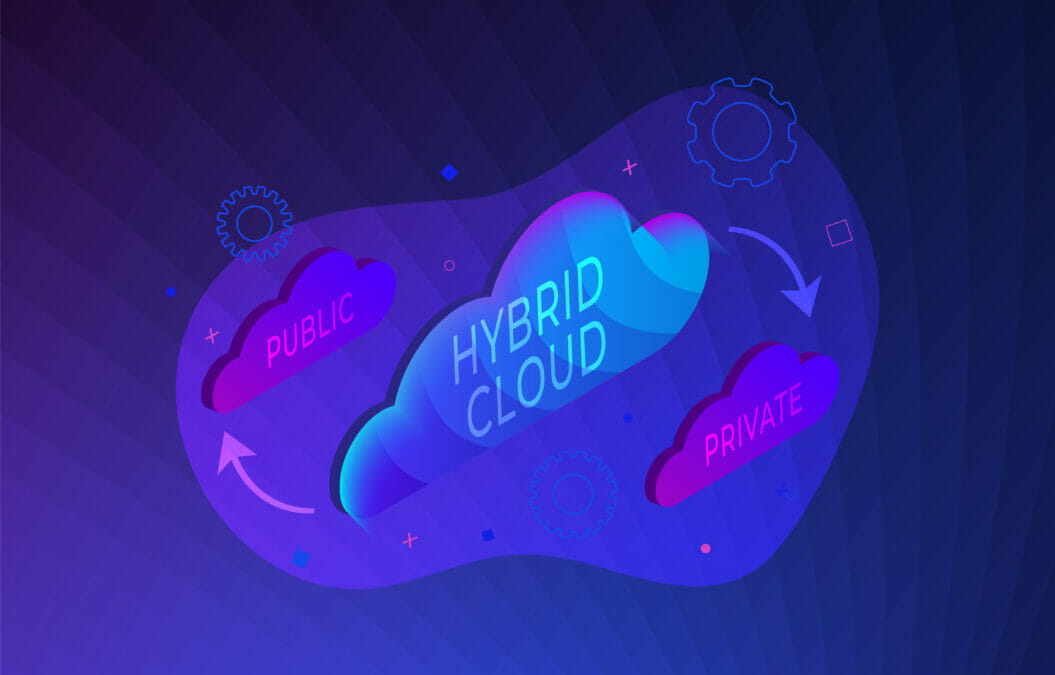The pandemic has upended many old business certainties – a mix of social distancing and hybrid working has seen to that. As a result, forward-looking enterprises of all sizes have started to explore the latest digital innovations in an attempt to maintain business continuity, enhance overall operational efficiency and gain a competitive advantage in an increasingly vigorous commercial environment. This has accelerated the digital transformation of businesses of all sizes, which in turn has created new data processing and storage requirements. For many enterprises, the versatility offered by hybrid cloud applications has been part of that transformation, but what does it actually entail?
Head in the cloud
Hybrid cloud refers to a mixed computing, storage and services environment made from on-premises infrastructure coupled with private and public cloud options. Properly implemented, this flexible blend of opportunities deliver a seamless, secure and highly automated data solution that can enhance productivity and overall business agility. But it can get complex.
For example, when using hybrid cloud it is essential to have the ability to seamlessly move workloads between data centres and cloud locations. To ensure the best result, companies should verify they have established a hybrid data fabric based on flexible storage as it helps guarantee a faster implementation of services, as there is no hardware or software to deploy, all without compromising on security and privacy.
The scale and speed of this cloud-powered transformation, and the issues it raises, are underlined by a recent report from IDC, which claims that 80% of enterprises are putting mechanisms in place to shift to cloud-centric infrastructure and applications twice as fast as before the pandemic. And nowhere is this more marked than in manufacturing.
Is ‘Right to Repair’ right for industry?
Data is the driver
The implementation of Industry 4.0 solutions is driving the manufacturing sector to adopt a range of technologies including internet of things (IoT) connectivity, edge computing, next gen analytics and artificial intelligence (AI). Together, they can release the transformative power of data.
However, they all need to be properly integrated, otherwise the vast amounts of information available from, say, edge devices risks being stranded. That could otherwise be processed by AI and analytics and turned into actionable insights, the answer for many manufactures in hybrid cloud because of its ability to seamlessly and efficiently deliver data, where and when it’s required.
Feeding the BEAR
However, it’s not just industry and manufacturing that can benefit from a hybrid cloud solution. The University of Birmingham is a major research destination in the UK. To fulfil that role, it provides a collection of IT resources, known as Birmingham Environment for Academic Research (BEAR), at no cost to its in-house community and qualified external researchers.
Many run highly complex computing simulations, which produce or use vast amounts of data. This needs to be stored and readily accessible, both to current users and those looking to verify and build on results in the future.
The solution – a hybrid cloud environment, coupled with reliable software-defined storage, which is designed to integrate big data analytics and clusters applications in a high-performance, scalable deployment. Significantly, this combination enables administrators to leverage highest performing on-premises storage by moving cooler data to the cloud, reducing capital and operational expenditure.
Another example of the benefits of hybrid cloud is the deployment used by Continental Automotive to support the development of its Advanced Driver Assistance System (ADAS). One of the company’s biggest challenges was managing the data involved in the creation of its autonomous driving technology.
Continental realised it needed a powerful parallel file system to meet the high-speed demands of AI and to protect sensitive data. The answer – integrating its storage with Kubernetes containers, which enabled the company to modernise its application development without compromising on infrastructure requirements such as performance, scalability and simplicity.
How Kubernetes extends to machine learning (ML)
Maximising the value of data
The digital transformation of enterprises of all types is gaining traction, a process that is fundamentally reshaping the use and value of data. To ensure enterprises have the freedom to exploit this value, when and where they need it, they are turning to hybrid cloud applications. Knowing your data is secure and accessible has never been more important, which makes choosing the best possible cloud solutions partner a business-critical decision.








